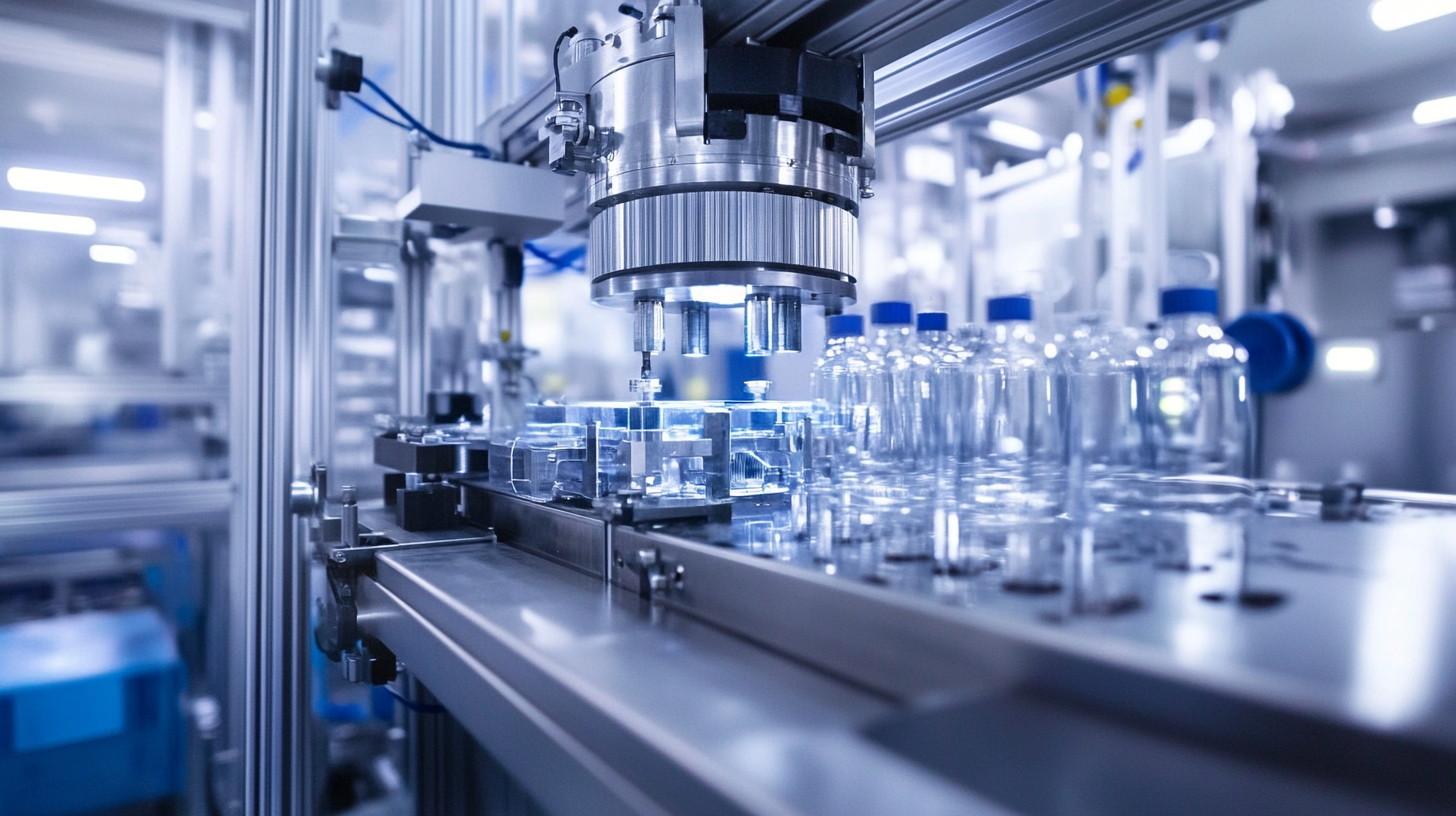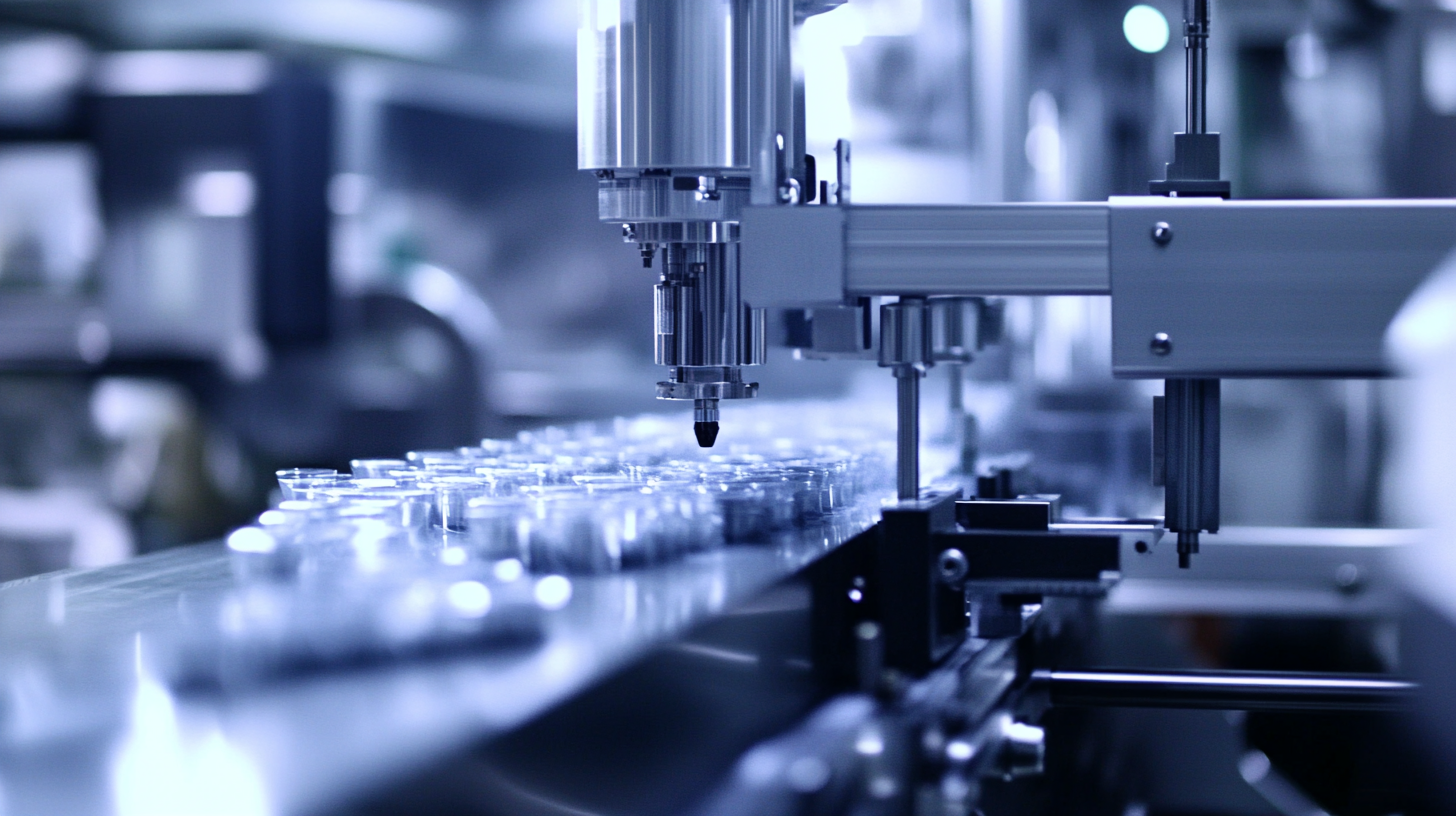Exploring the Unique Features and Applications of the Best Fully Automatic Packaging Machinery
In recent years, the packaging industry has undergone a significant transformation, driven by advancements in technology and evolving consumer demands. The demand for efficiency and precision has propelled the development of Fully Automatic Packaging Machinery, which is projected to reach a market valuation of approximately $35 billion by 2025, according to a report by MarketsandMarkets. This surge is primarily attributed to the increasing need for streamlined operations and reduced labor costs in manufacturing. Fully Automatic Packaging Machinery not only enhances productivity but also ensures consistency in packaging quality, a critical factor for brand reputation and compliance with regulatory standards. As businesses strive to meet the challenges of a rapidly changing marketplace, understanding the unique features and applications of these innovative machines will be essential to maintaining competitive advantage and meeting consumer expectations.

The Rise of Fully Automatic Packaging Machinery: A Look at Market Growth Statistics
 The global packaging machinery market has witnessed significant growth, particularly with the rise of fully automatic systems. According to recent market research, the demand for these advanced packaging solutions is escalating rapidly, driven by the need for efficiency and precision in manufacturing processes. As businesses strive to streamline operations and reduce labor costs, fully automatic packaging machinery has emerged as a game-changer. This technology not only enhances productivity but also ensures consistent quality in packaging, which is crucial for brand integrity.
The global packaging machinery market has witnessed significant growth, particularly with the rise of fully automatic systems. According to recent market research, the demand for these advanced packaging solutions is escalating rapidly, driven by the need for efficiency and precision in manufacturing processes. As businesses strive to streamline operations and reduce labor costs, fully automatic packaging machinery has emerged as a game-changer. This technology not only enhances productivity but also ensures consistent quality in packaging, which is crucial for brand integrity.
Moreover, the trend toward fully automatic systems is supported by impressive market growth statistics, indicating a robust CAGR of 22.5% through 2033. This surge is a clear reflection of the growing adoption of smart solutions across industries, including food and beverage, pharmaceuticals, and consumer goods. As manufacturers increasingly seek to optimize their production lines, the transition to fully automatic machinery is becoming imperative. The market is projected to reach a valuation of USD 38.27 billion by 2033, underscoring the transformative impact of automation in the packaging sector.
Key Features of the Best Fully Automatic Packaging Systems: Operational Efficiency Metrics
Fully automatic packaging machinery represents a significant advancement in operational efficiency for businesses aiming to enhance their supply chain performance. These systems are designed to optimize various metrics crucial for production and distribution, such as lead time, inventory management, and production scheduling. By implementing key performance indicators (KPIs), companies can effectively gauge the efficiency of their packaging processes, ensuring a seamless flow of goods from production to delivery.
In a context where supply chain resilience and agility are paramount, the latest innovations in fully automatic packaging machinery have emerged as vital tools. These machines not only elevate throughput but also minimize lead time variability, which is essential for maintaining a stable supply chain. The integration of advanced technology into packaging processes allows businesses to react swiftly to market changes while maintaining high standards of quality and service. This adaptability is essential for future-proofing operations and gaining a competitive edge in today's fast-paced marketplace.
Comparative Analysis: Cost-Effectiveness of Fully Automatic vs. Semi-Automatic Packaging Solutions
When evaluating the cost-effectiveness of fully automatic versus semi-automatic packaging solutions, industry data reveals significant distinctions that businesses must consider. A recent report by Freedonia Group highlights that fully automatic packaging machinery can reduce labor costs by up to 30%, given its ability to operate continuously without the need for extensive human intervention. This can lead to increased throughput and efficiency, essential for high-volume operations, particularly in sectors like food and beverage where speed and consistency are critical.
Additionally, a comparative analysis by PMMI shows that while the upfront investment for fully automatic systems can be substantially higher—typically 25-100% more than semi-automatic solutions—the long-term savings on labor and reduced product waste can justify this initial cost. The report indicates that over a five-year span, the total cost of ownership for fully automatic systems often results in a 15-25% lower overall expenditure compared to their semi-automatic counterparts. As businesses continue to seek ways to enhance productivity and reduce operational costs, these findings underscore the importance of selecting the right packaging solution tailored to specific operational needs and financial goals.
Exploring the Unique Features and Applications of the Best Fully Automatic Packaging Machinery - Comparative Analysis: Cost-Effectiveness of Fully Automatic vs. Semi-Automatic Packaging Solutions
| Feature | Fully Automatic Packaging Machinery | Semi-Automatic Packaging Machinery |
|---|---|---|
| Initial Cost | High ($50,000 - $150,000) | Moderate ($20,000 - $70,000) |
| Operational Efficiency | Very High (up to 300 packs/min) | Moderate (up to 100 packs/min) |
| Labor Requirements | Minimal (1-2 operators) | High (3-5 operators) |
| Flexibility | Limited (specific packaging types) | High (multiple packaging types) |
| Maintenance | Lower frequency (every 6 months) | Higher frequency (every month) |
| Return on Investment (ROI) | High (within 1-3 years) | Moderate (within 3-5 years) |
| Common Applications | Food industry, pharmaceuticals | Packaging of small goods, retail items |
Industry Applications: How Fully Automatic Machines Enhance Production in Various Sectors
Fully automatic packaging machinery has transformed production processes across various industries by streamlining operations and enhancing efficiency. In the food and beverage sector, these machines are essential for high-speed packaging, ensuring products maintain freshness and compliance with safety standards. By automating tasks such as filling, sealing, and labeling, manufacturers can significantly reduce labor costs and minimize the risk of human error, which is crucial in maintaining product integrity.
In pharmaceuticals, the precision and reliability of fully automatic packaging systems ensure that medications are packaged correctly and tracked for quality assurance. This is vital in an industry where regulatory compliance is paramount. Additionally, these machines can be tailored to handle a broad range of products, from vials to plastic containers, which allows flexibility in production lines to meet varying demands. As industries continue to evolve, the integration of fully automatic packaging machinery will remain a key driver in enhancing production capabilities and meeting market needs efficiently.
Future Trends: Innovations in Fully Automatic Packaging Machinery and Industry Impact
The recent advancements in fully automatic packaging machinery are pivotal to the evolution of the food processing industry. As highlighted in the 2025 China International Food Processing and Packaging Machinery Exhibition, themes of "Intelligent Manufacturing Upgrades" and "Green Future" underline the importance of integrating innovative technologies into packaging solutions. This event serves as a platform for showcasing the latest machinery that not only enhances efficiency but also aligns with sustainable practices, catering to the growing demand for eco-friendly packaging.
Emerging trends indicate a significant shift towards digitalization and automation within the packaging sector. The introduction of AI technologies is revolutionizing the design and functionality of packaging equipment, enabling smarter, more adaptive systems that respond to market needs. With the food industry's rapid transition towards innovative solutions, fully automatic packaging machinery is anticipated to play a crucial role in optimizing production processes, ensuring quality, and minimizing waste, thereby contributing to overall industry sustainability. These developments demonstrate the intertwining of technological progress and environmental responsibility that will shape the future of food packaging.

